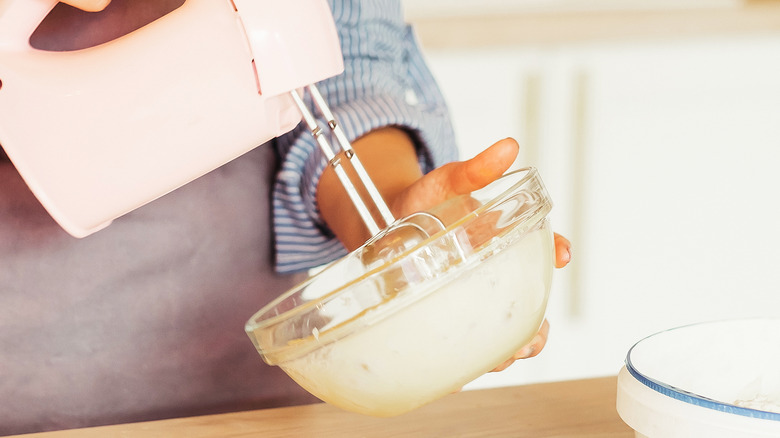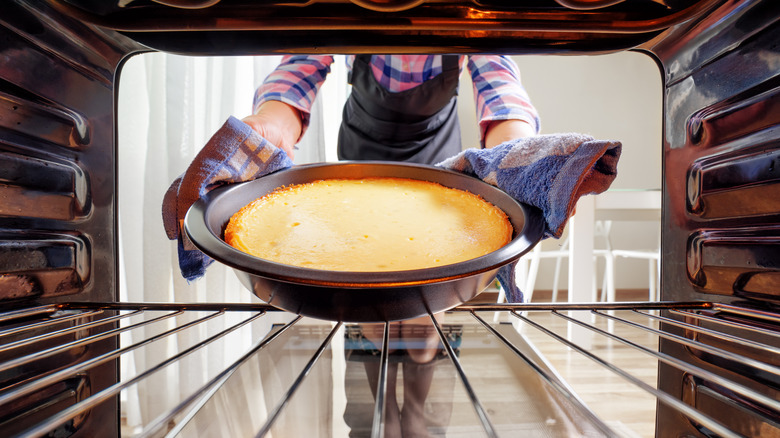Why You Should Never Over-Mix Dough In Your Baked Goods
Anyone who bakes frequently knows that it's always best to follow the recipe to a T. Skipping steps or eyeballing ingredients can easily mess up the final product, and even something as minor as forgetting to aerate the flour or melt the butter makes a big difference. Perhaps the biggest faux pas of all, however, is to over-mix the dough or batter.
You've probably seen recipes explain exactly how long to whisk, or what speed to put your stand mixer on, and those specifications are there for a reason. No matter what type of baked good you're making, over-mixing is generally a bad idea, as it will significantly affect the resulting texture.
While it is important to thoroughly combine all the ingredients, you don't want to go overboard. Over-mixed dough leads to hard cookies and dense biscuits, and for the same reason, pancakes turn out better when you leave lumps in the batter. But what actually causes this to happen?
Over-mixing alters the chemical reactions at play
When there's flour, there's also gluten, and that means anytime you bake with the ingredient, you need to be mindful about over-mixing. Per Spoon University, gluten develops when flour is combined with wet ingredients, and the more you mix, the more of it forms. Gluten is important because it provides structure, but too much of it gives baked goods a gummy texture.
According to Eat This, Not That, when you over-mix, you're actively squashing all the necessary air bubbles. Air bubbles are what make many desserts light and fluffy, and without them they'll fall flat.
Food52 also points out that over-mixing can cause the butter to change in temperature. Some recipes call for cold or room temperature butter, and if you over-mix, the butter will warm up, ultimately affecting the flaky, tender texture you're aiming for. So if your baked goods are ending up too tough to enjoy, try being extra judicious with your mixing.

